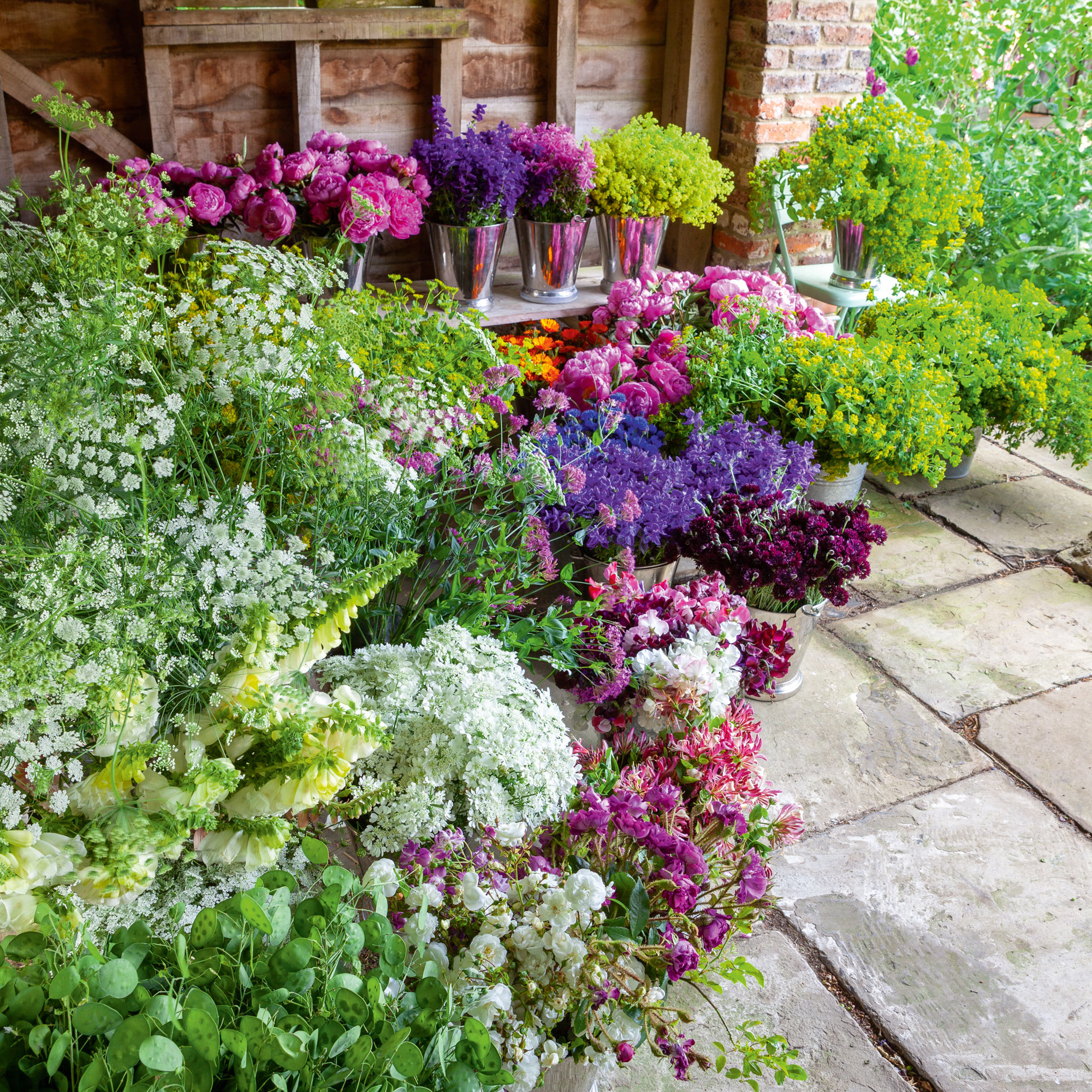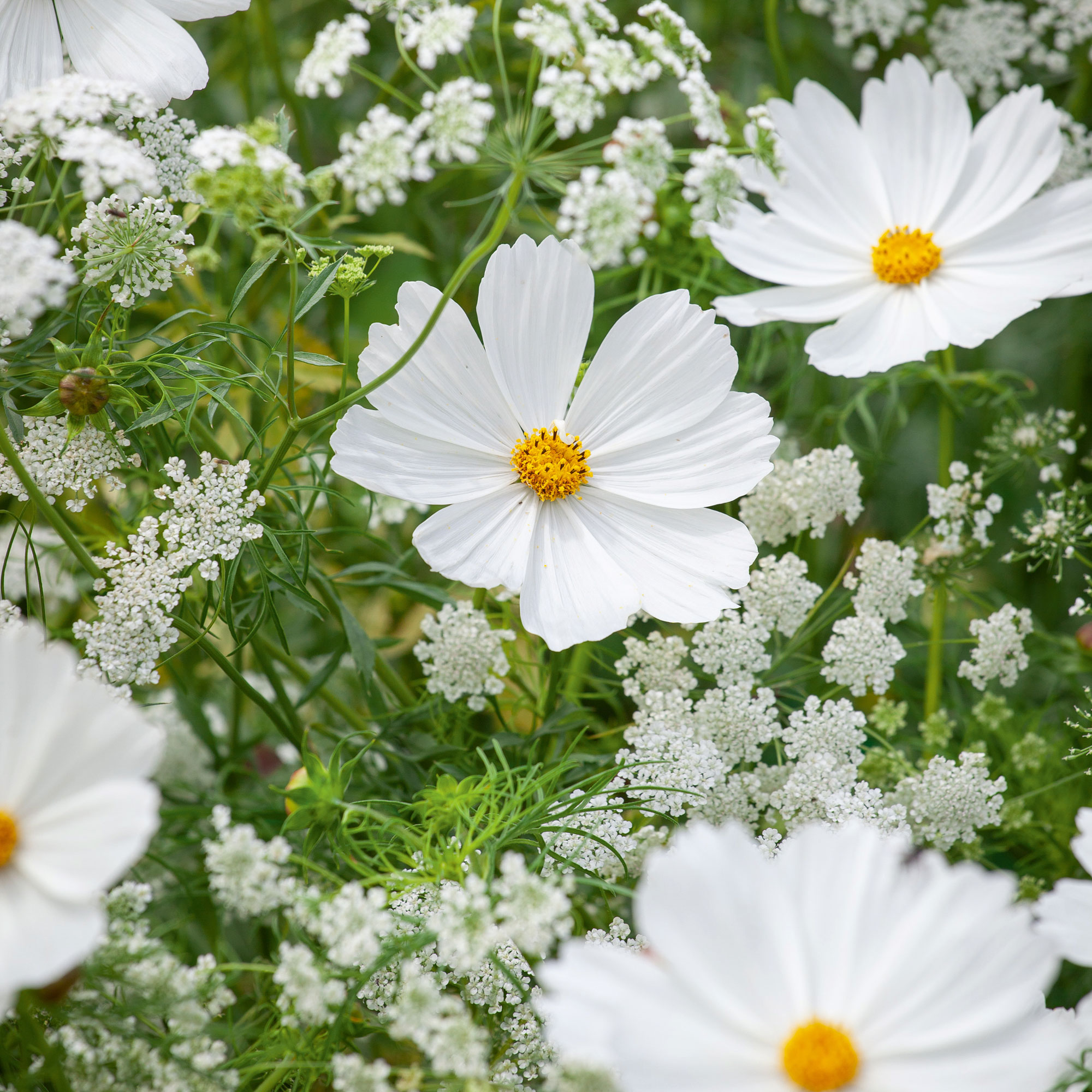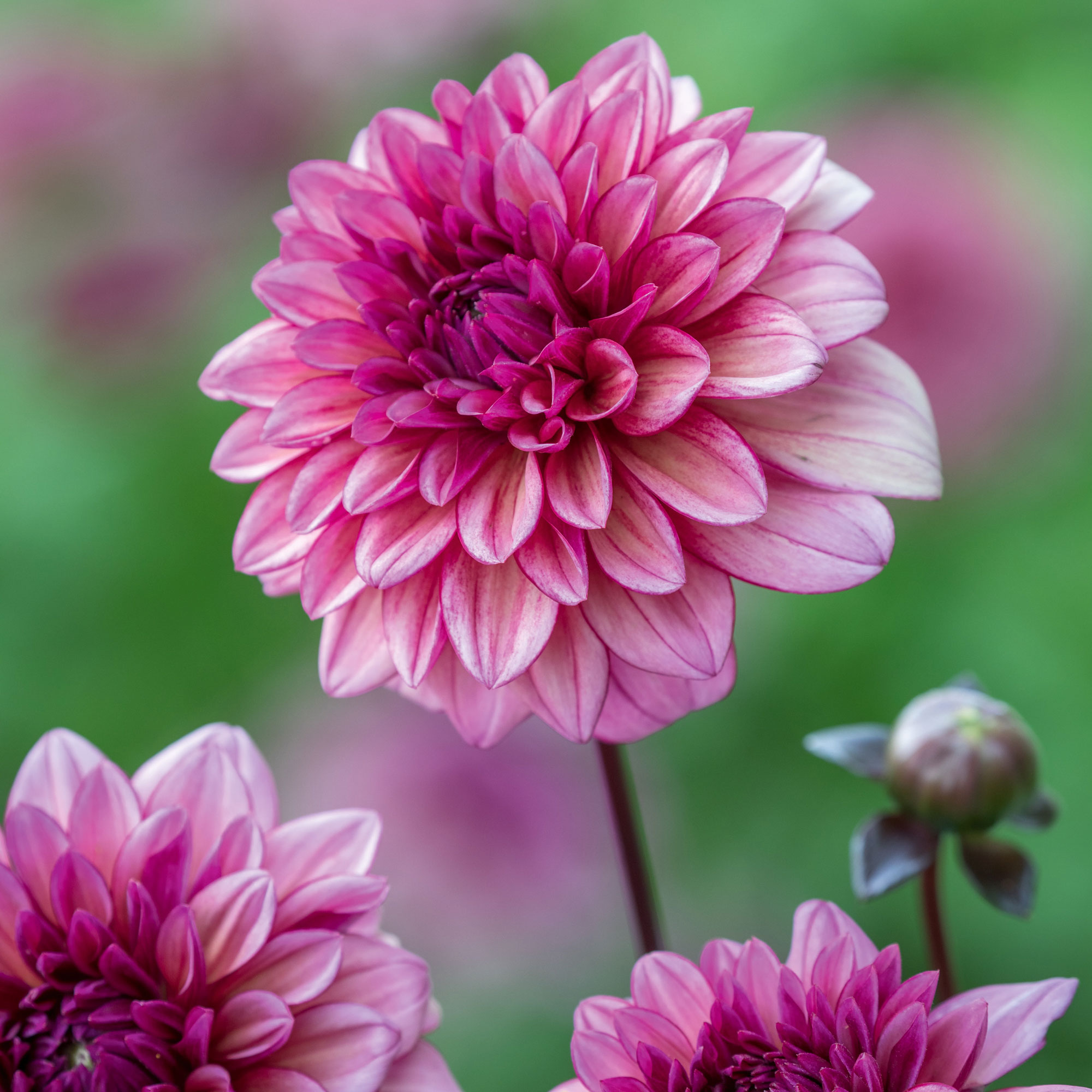
If you want to grow a cut flower patch in a small garden colour palette, or even a decent-sized window box, there is one key characteristic that every plant you select needs to share. They should be cut-and-come-again, you cut a handful of flowers — and within days they grow back.
It’s like an ever-filling cup, the more you pick, the more flowers form, right until the end of their season. Harvested correctly, just above a pair of leaves, within days an axillary bud will start to grow (in the angle between the stem and leaf) and that develops into another bloom.
This is garden landscaping for the optimist and for the person who loves their garden to be full of colour — and their house full of flowers. That’s me!
What are cut-and-come-again flowers?

There’s a great range of cut flower patch plants that are considered 'cut-and-come-again'. Sweet peas are famous for it, and you can add all annuals (plants that form roots, leaves, flowers and set seed within a few months), lots of biennials (which form roots and leaves in one year and flower the next), as well as dahlias.
The annual group contains many cottage garden favourites — scabious, cornflowers, marigolds, snapdragons, cosmos, and zinnias. They make the world a brighter, cheerier place.
Biennials include Iceland poppies (tissue-paper loveliness on a stem), sweet Williams (with clove scent) and foxgloves — one of the few good cut flowers which thrive in shade.
Dahlias are tender tubers (like potatoes) but with the milder winters we’ve had in the last decade, these can be mulched and left in the garden and will come again, like perennials, in spring. With increasingly wet winters, we'll need to make molehills of mulch over the crowns to throw the rain off.
Almost all these plants need sun and shelter. It’s from the sun they make their food. And dahlias hailing originally from Mexico, like plenty of sun, too.
Top 10 plants for sowing and growing right now
Choose half your plants from the filler-flower group, lovely to use as foliage — and the other half, what I call bloomy-blooms, showy flowers with glamour and pizzazz which can either be used in mixed arrangements, or simply, plonked in a vase on their own.
Plan to have a balance of different colours, too. From rich to pastel, bright to white, choose your favourites, but make sure you have a good range.
Bloomy blooms

Cosmos ‘Purity’
A pure white classic cut flower and border filler, which gives a bigger harvest per square metre than any we’ve grown.
Sow where they are to flower in April or start a little earlier, sowing inside into individual pots. They’ll be in flower from July to October.
The newly bred, ‘Apricotta’ is subtle and beautiful, perfect for the soft, warm palette and the rich, velvety ‘Rubenza’ also top-class. All are great arranged on their own or with harmonious-coloured zinnias or dahlias.
These 3 cosmos varieties grow to at least a metre, so will need a stake by their side, or to be grown up through horizontally stretched jute netting, strung between cane or willow uprights. This sounds complicated but is easy to do.
Or select one of the smaller, container compatible forms such as ‘Sonata White’, or ‘Sonata Carmine’ but they give fewer flowers.
Zinnia ‘Queenie Red Lime’
Suited to a sunny well-drained spot, this is a glamorous stalwart for summer and early autumn. Either buy seedlings, or direct sow, well-spaced straight into a pot or border front and thin the seedlings there.
No zinnia likes root disturbance. And they hate cold nights, so wait till the end of May for these. Mass them together in a small vase or with dahlias.
Snapdragon (Antirrhinum) ‘Sarah Raven Colour Mix’
Rich velvet textures and colours are the name of the game here, with metre high flower stems with a 10-day vase life. If you prefer pastel colours, go for ‘Giant White’ and ‘Apple blossom’, which even has scent.
The tiny seedlings need pricking out before planting in the garden, so bought-in seedlings are probably the easiest way to get snapdragons. I love these arranged in a tall vase, just on their own.

Sweet pea ‘Harlequin Mix’
My favourite mix of three sweet peas with rich, intense colours and wonderful scent. ‘Matucana’ has the strongest perfume of any sweet pea we’ve grown. Sow one seed (2cm depth) into its own pot (ideally a deep pot, or better still use a special sweet pea pot called a root trainer.
Sweet peas thrive with a long, deep root run). Plant out, spaced 10cm apart at the centre of your cut flower patch trained on a teepee of stakes or canes as a climbing frame. Water and feed regularly. Sweet peas are great arranged in simple vases or jam jars.
Dahlia ‘Labyrinth’
If you love soft colours, this dahlia, with gently curving petals in peach, pink and cream is for you. For its rich chocolate crimson flowers and elegant curves, I also love ‘Rip City’. Both are excellent flower producers.
As is ‘Molly Raven’ bred by us and named after my younger daughter and ‘Perch Hill’. The last two have longer than average vase lives of 7 days.
Plant tubers in decent-sized pots in April to put out in the garden in May. They need support. Great arranged just as single stems or massed in a bowl.
Filler Flowers

Clary (Salvia viridis ‘Blue’)
Wonderful rich blue spires perfect for lining a path, or garden edging ideas, this is exceptional for picking with a vase life of ten days. One of the first cut flowers I grew, I’d be bereft without it. Its colour goes with everything. Sow seeds direct
Queen Anne’s Lace (Ammi majus)
With the airy look of cow parsley but even prettier, this has a ten-day vase life, beautiful on its own in a vase in a great powder-puff, and equally good picked as a filler to mix with sweet peas or cosmos. Buy seedlings or sow direct. These will need support.
Honeywort (Cerinthe major ‘Purpurascens’)
With elegant purple bells hanging below silver leaves, this is one of my favourite filler-foliage flowers, so I do two sowings a year. We sow in April to pick all summer, and in September, to pick for much of spring.
As a hardy annual this will survive outside in all but the harshest winter. As you can tell by its name, this is loved by pollinators as a great nectar source. Perfect arranged with tulips.
Euphorbia oblongata
My favourite ever foliage plant, where one acid-green plateaux-flower is the BEST foliage base for a small arrangement and you only need 3 to 5 stems for even a large vase.
The one downside is you need to protect yourself against the sticky milky sap. Wear gloves and take care not to wipe your face or eyes. Sear the stem end in boiling water (see 'Conditioning' below for more advice) to seal the sap in. This self-sows, but sow in a seed tray initially and plant from there.
Panicum ‘Sparkling Fountain’
Airy and elegant, like the finest spun sugar in a French patisserie, this is unusual amongst grasses and grains in that it is cut-and-come again. By picking the leader, more panicles develop.
This dries brilliantly too and is stacked with seed for garden birds, giving us one of the great sights of autumn, a cut flower patch of panicum covered in goldfinches. These self-sow but sow in a seed tray initially and plant out from there. Great arranged with brilliant-coloured flowers (particularly dahlias).
Conditioning - get the most out of your cut flower patch

Pick into water in the morning or evening. Then boil a kettle and plunge the bottom 10% of the stem into a coffee mug of boiling water and then into cold water. Like blanching veg, you don’t want them to continue cooking.
If the stem is soft, (like cosmos or snapdragons) leave them in the boiling water for only 5 seconds. If it’s woody, (like lilac or a rose), give it 20 seconds. This partially destroys the outer cell wall, allowing plentiful water uptake to supply the flower.







